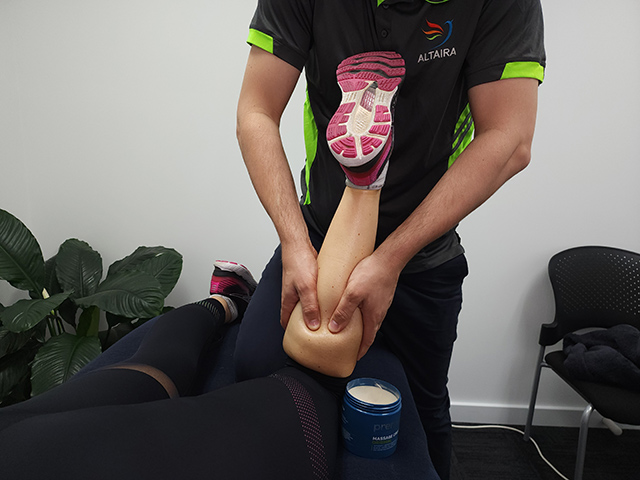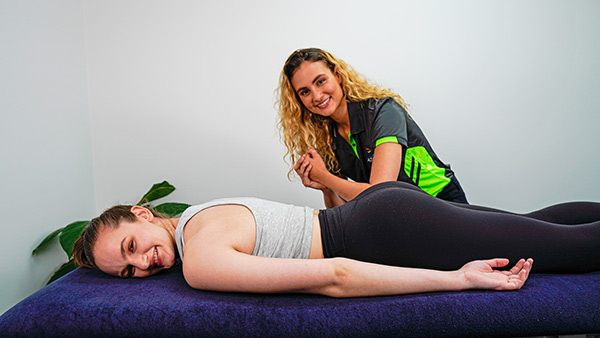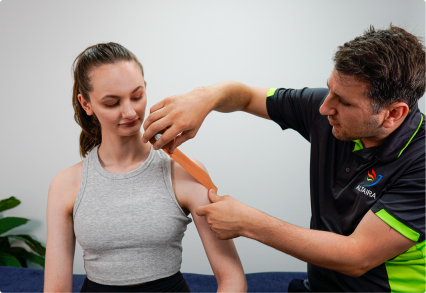Muscle Strains
Treatment for muscle strain
Our expert physiotherapists design tailored plans for the treatment for muscle strain, from neck pain to sports injuries, helping you recover and perform at your best.
Characteristics of muscle strains
- Muscle strains usually occur during bursts of speed and rapid acceleration.
- Onset is usually via sudden sharp pain and they often occur in large muscles which cross over joints, such as hamstring or quadriceps (thigh) strains.
- Mechanism of injury will normally involve explosive muscle contraction (non-contact), usually through eccentric loading (i.e. lengthening phase of the muscle).
- Signs and symptoms may be sudden, or delayed onset after physical activity has ceased.
- Swelling and/or bruising may be evident, this is grade dependent. There will be pain at the injured area, and it will often be tender to touch.


Grading of muscle strains
Grade I
- Minor fibre tearing with mild pain on contraction and stretch
- May or may not have bruising and be tender to touch
Grade II
- Intermediate tear with more muscle fibres torn
- Moderate pain with contraction and stretch
- Easier to reproduce signs and symptoms, are usually has more obvious bruising
Grade III
- Complete muscle tear with associated loss of function
- Sever pain and swelling, can feel a gap in the muscle tissue
- Can feel a palpable gap in the muscle tissue
Muscle strain management
Acute – 0 to 3 Days
- RICE (rest, ice, compression, elevation).
- Early mobilisation to facilitate quicker repair of injury
Subacute – 3 to 5 Days
- Active treatment should be started gradually with range of motion exercises
- Gradually commence loaded muscle and dynamic training
- Physiotherapist can assist with massage, stretches, and a home exercise plan for


